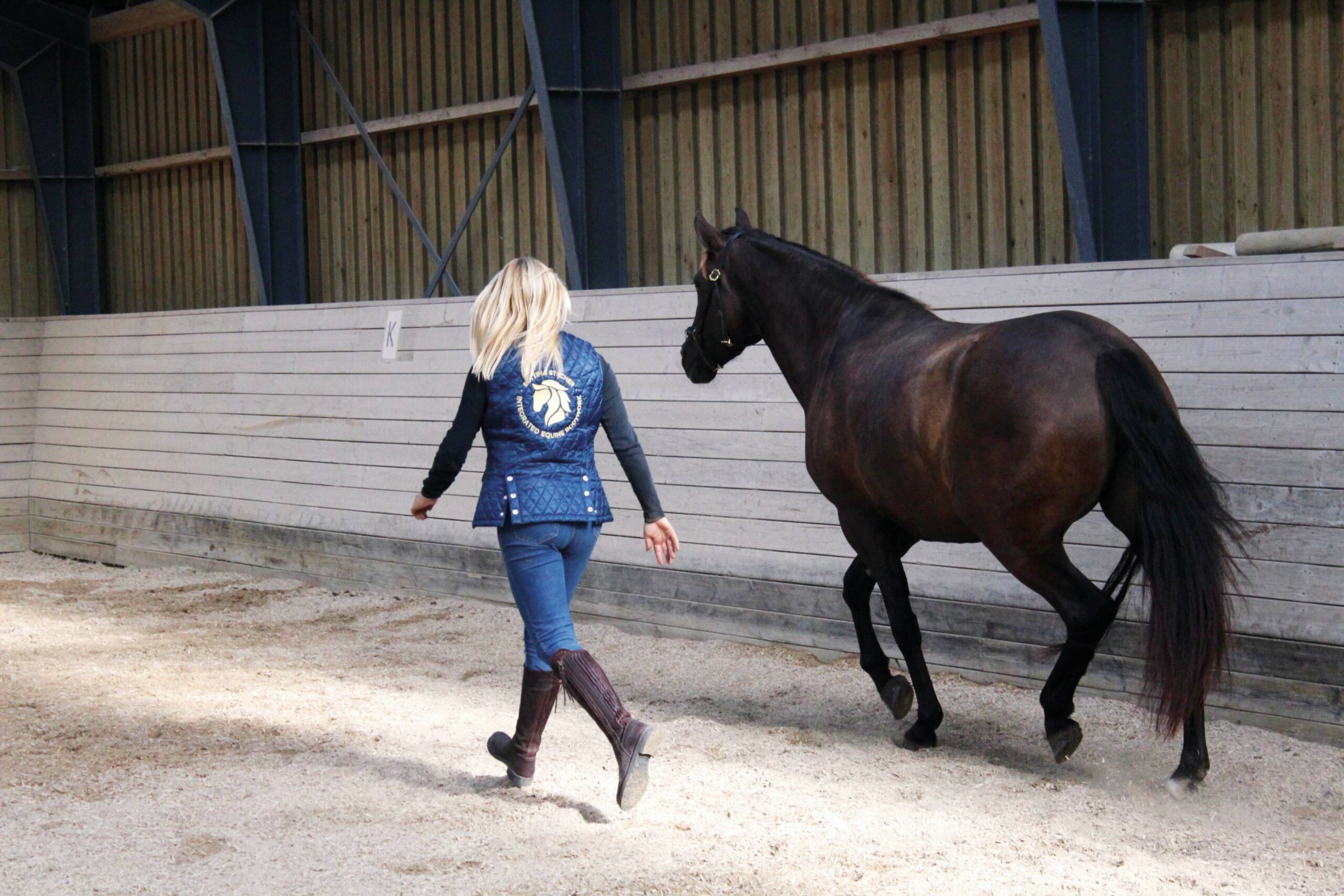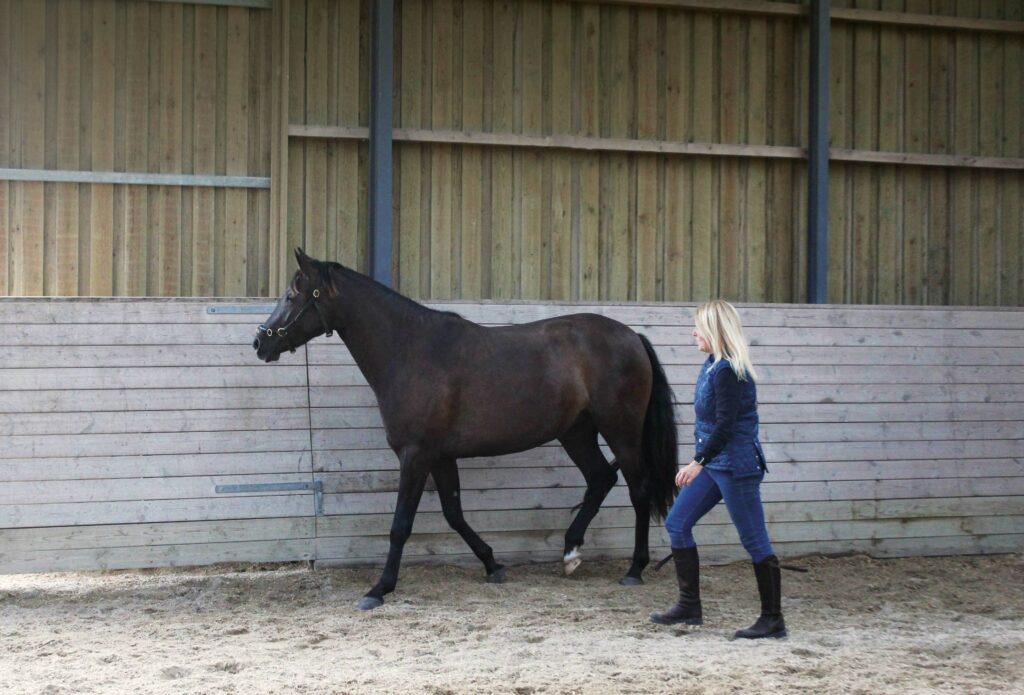Menu

Are you able to train your horse without the use of ropes or other equipment? Some may think ”Why would you do that?”.
The truth is that training the horse loose gives you a unique insight into your partnership and the horse’s focus on you.
It is never too late to develop communication between you and your horse. And training without ropes or reins is a way to be together that can develop exactly that in several ways. This way of training will reveal how much focus your horse has on you. If focus is not present, the horse will most likely turn away and walk away from you. Moreover, it is a way of cooperating with your horse on equal terms – a place where you can meet and be together in a new way. A place where intensity, respect, presence, and communication are very much on the agenda.
You may also like to read: Equine therapist Line Østerhagen believes in equal quality treatment for people and horses
When training your horse loose, you will have to develop a common language with signals that both parties understand. The common language means that the horse understands you and your signals.
The signals can be both verbal and nonverbal. For example, you can have your horse perform specific gaits or exercises with the help of sounds or by using your body. The common language will contribute to your horse perceiving your company as a pleasant place to be. Simply because things become predictable and the horse understands what to do.
The ropeless way of training opens up endless ways to differentiate the training. There is room for play and focus. This kind of training can be used when lunging, jumping, environmental training, or dressage. Only your imagination sets the rules.
In addition, ropeless training is a unique possibility to grow an even stronger bond and understanding between the horse and yourself. Besides the mental advantages, there are also physical ones to gain. Training this way gives the horse the possibility to work freely throughout its body because the is no physical pressure to work against.
Advantages
Training your horse loose is something that everybody can learn. However, it takes time and dedicated training. For example, your horse will have to learn the basic signals for moving, stopping, and changing direction.
When you give a signal, you gradually increase the pressure to get a reaction. How your horse reacts depends on its character and previous experiences.
In an optimal situation, your horse will be curious when you train. In this state, it is attentive and creative and can move with energy without being tense. How much pressure you use depends on what your horse shows you with its reactions.
If your horse stops blinking or stiffens up, it is a sign that it is in a place where it is not able to learn. Here you have to tone down the pressure and increase it very slowly. Give your horse time to breathe, so it can find the solution to the situation.
If your horse is very relaxed you can increase the pressure until you get a reaction. It is perfectly normal that the calm horse also can get tense when pressure builds and it finally reacts. Think that your total energy must be in balance. If your horse is nervous, you have to tone down your energy. If your horse on the other hand lacks energy, you must increase your energy.

One of the things you can do without using ropes is lunging. Here you can train both speed, gaits, turns, and stops.
To be able to lunge your horse loose, it has to have full focus on you the entire time. It also has to understand your signals. In addition, it makes the job easier if you are in control of the following:
You can easily use some of the elements from ”normal” lunging and step-by-step test some of the elements while the horse is loose. Observe how the horse reacts. If it runs away or seems confused it is a sign for you to take a step back and train the basic signals again.
You may also like to read: Scientists: Horses and humans have a special bond
Source: Christina Holmbæck, www.ridekunstmedlethed.dk